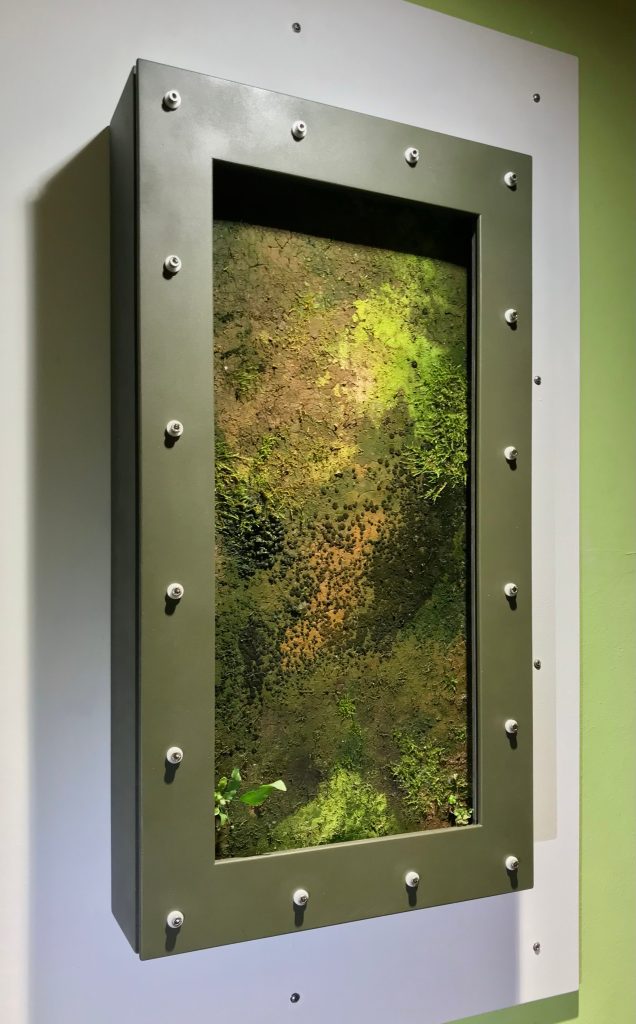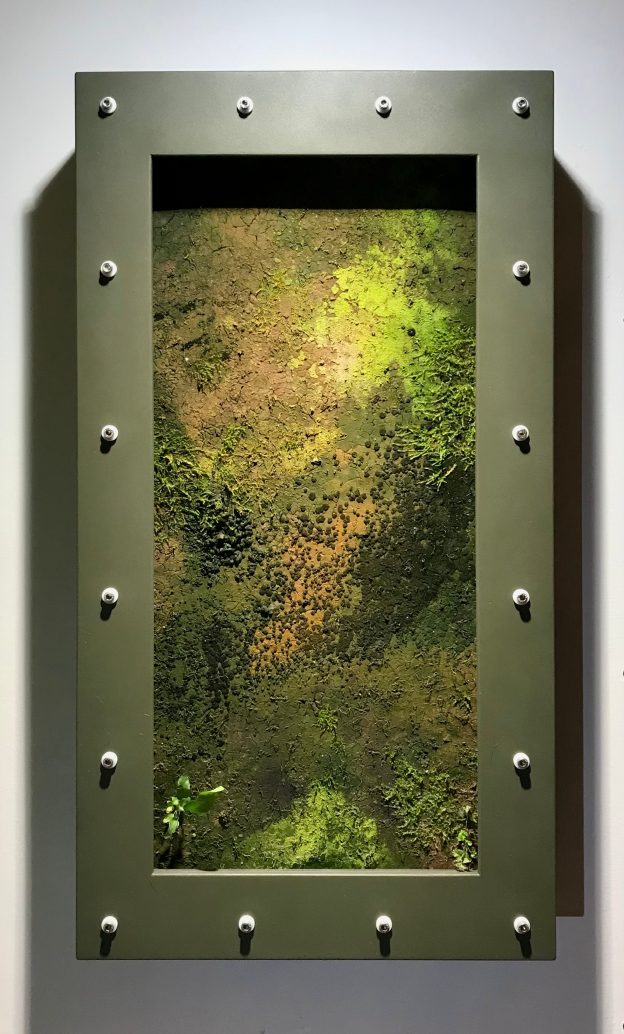With individual cells usually much too small to see without magnification, Prokaryotes, the Bacteria and Archaea, are the tiniest of all living things. Lacking membrane-bound nuclei and organelles, individual Prokayote cells are also structurally simple in comparison with those of the Eukaryotes, the group that includes us and the other multicellular organisms along with the diverse and usually single-celled Protists. But initial impressions can be deceiving. When characterized according to metabolic strategies, the chemical pathways that an organism can leverage to create, store and expend energy, the Prokaryotes are vastly more diverse than the Eukaryotes. The cells of Animals, Plants, Fungi and Protists generally use oxygen-dependent reactions, but the Prokayotes can leverage elemental or compound forms of Hydrogen, Nitrogen, Sulfur, Iron or Manganese, among other options, to drive their cellular respiration.
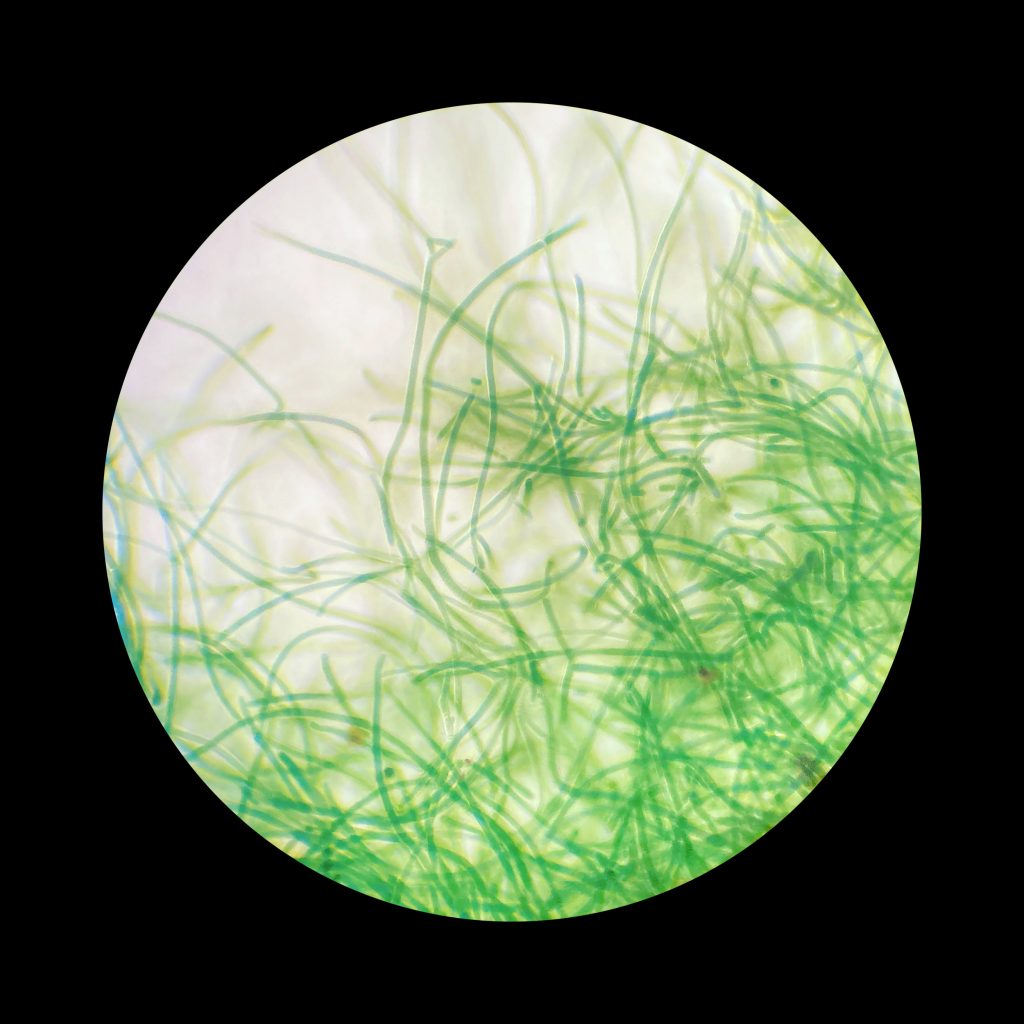
While they are usually much to small to see, the Prokaryotes may grow colonially as Cyanobacteria-dominated aquatic microbial mats, macroscopic structures that are essential primary producers and critical recyclers of essential nutrients. Microbial mats were probably among the Earth’s earliest ecosystems. Stromatolites are stony structures formed beneath and within microbial mats through precipitation of calcium carbonate (CaCO3) in layers as a consequence of photosynthesis. An individual stromatolite may have a mass of several tons, while collectively stromatolites can form immense reef structures, although this manifestation of Prokaryote rock-building was much more common in the deep past than in the oceans of today.
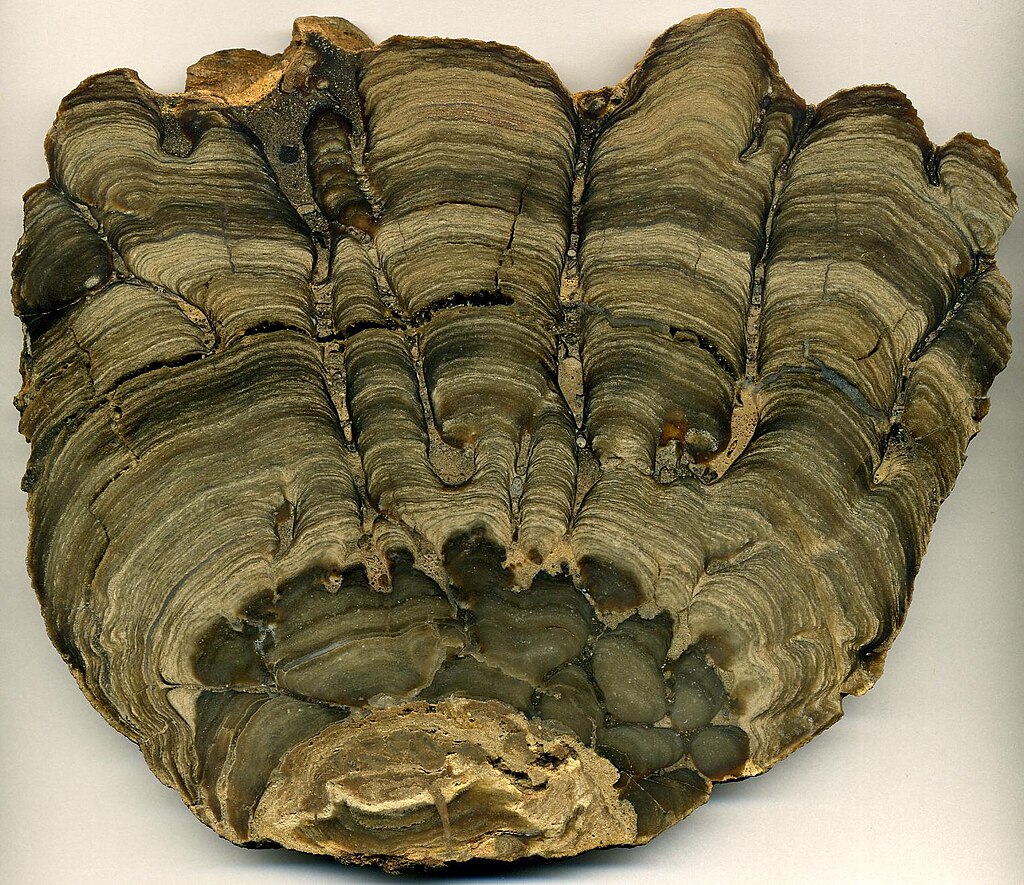
Date: 8 January 2013.
Attribution:
James St. John (jsj1771) https://www.flickr.com/people/jsjgeology/, CC BY 2.0 https://creativecommons.org/licenses/by/2.0, via Wikimedia Commons
Microbial mats usually grow in fully aquatic situations, but the land surface can also develop an extensive, visible and ecologically-important Prokaryote community. Biocrusts grow as thin layers on stone or soil surfaces in areas where harsh conditions exclude most plants. They are often composed primarily of Cyanobacteria, while also hosting Algae, Fungi, tiny invertebrate Animals, Lichens and simple Plants (e.g. Mosses, Liverworts), About 12% of the Earth’s land surface is covered with biocrusts, with most of this coverage in deserts where the feature is also known as cryptogamic crust.
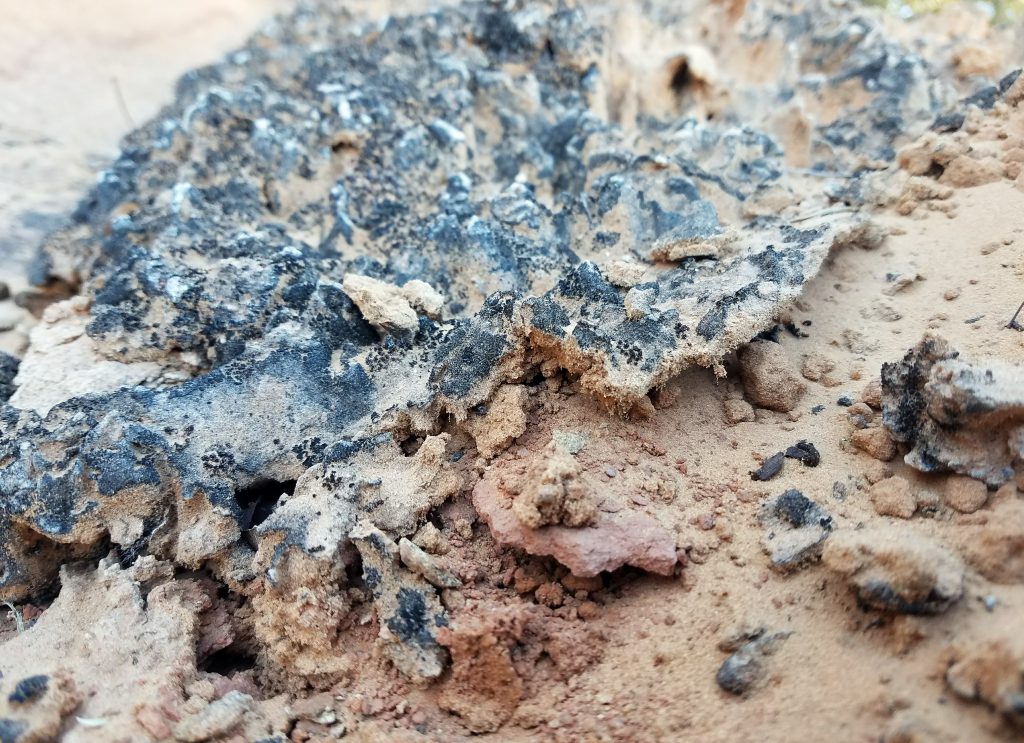
As a biophilic design feature, this project is a variation on living wall or vertical garden concepts, but we configured it to showcase Cyanobacteria and Algae as a living biocrust. The build process started with stitching of a felted industrial scrub pad to a plastic frame. Dry red art clay was poured into the pad, then wetted to create a microbial colonization surface. The following organisms were purchased from a biological science supply house as liquid cultures, then introduced to areas of the moist pad:
- Chlorococcum sp., a Green Alga.
- Coleochaete scutata, a Green Alga with interesting proposed evolutionary status.
- Fischerella sp., a filamentous Cyanobacterium.
- Gloeocapsa sp., a Cyanobacterium known to damage shingle roofs.
- Mougeotia sp., a Green Alga.
- Protococcus sp., a single-celled, primarily terrestrial Green Alga with one species implicated in formation of watermelon snow.
Biocrusts grow in the Earth’s driest deserts, but the Algae and Cyanobacteria that comprise them are essentially aquatic organisms: they survive these conditions by growing after rain events or fog, then enter dormancy as soil moisture evaporates. Not every Green Alga or Cyanobacterium can grow like this out of the water. While making the project selections we used Internet and scientific publication research to find taxa with at least some documentation of terrestrial growth.
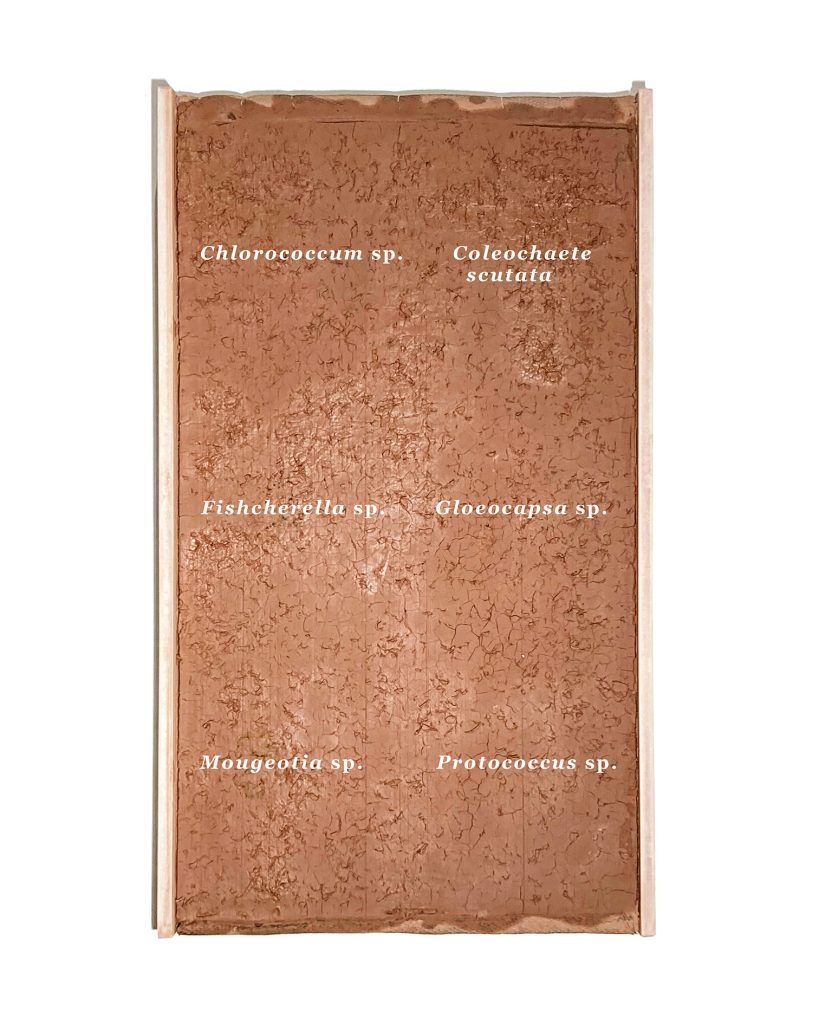
We applied small amounts of dilute liquid fertilizer were applied to the clay surface, then enclosed the pad + frame in a clear plastic tub. An LED strip provided lighting while moisture was maintained with occasional waterings.
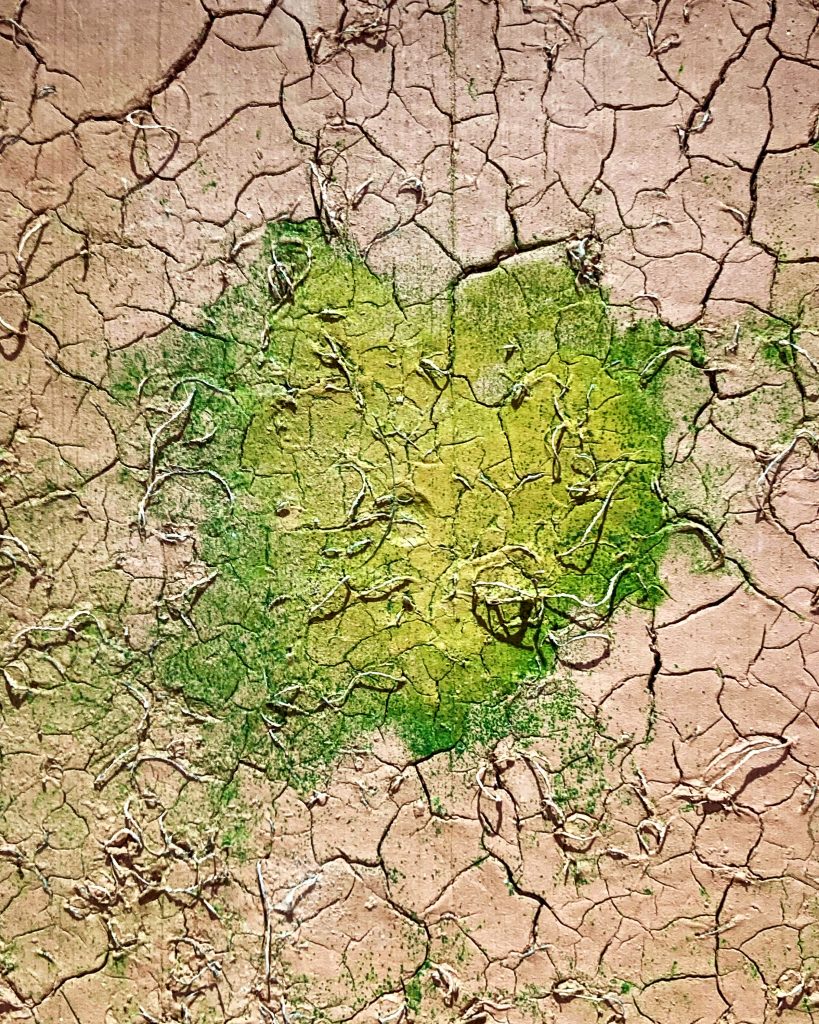
The clay developed a wonderfully rich patina of colors and textures as the microbial biocrust developed. Having dispersed to the environment as spores, a few patches of Moss and two Ferns also appeared on the panel as volunteers. Since it grows faster than the Cyanobacteria and Algae, the moss has been trimmed back several times, but we have left small areas of coverage for more variety. A watertight, wall-mount enclosure (40cm X 73cm X 12cm) displays the panel, while a pendant LED lamp provides illumination for viewing and photosynthesis. Irrigation water applied to the top of the panel wicks though the felt filter pad to maintain moisture for the growing biocrust.
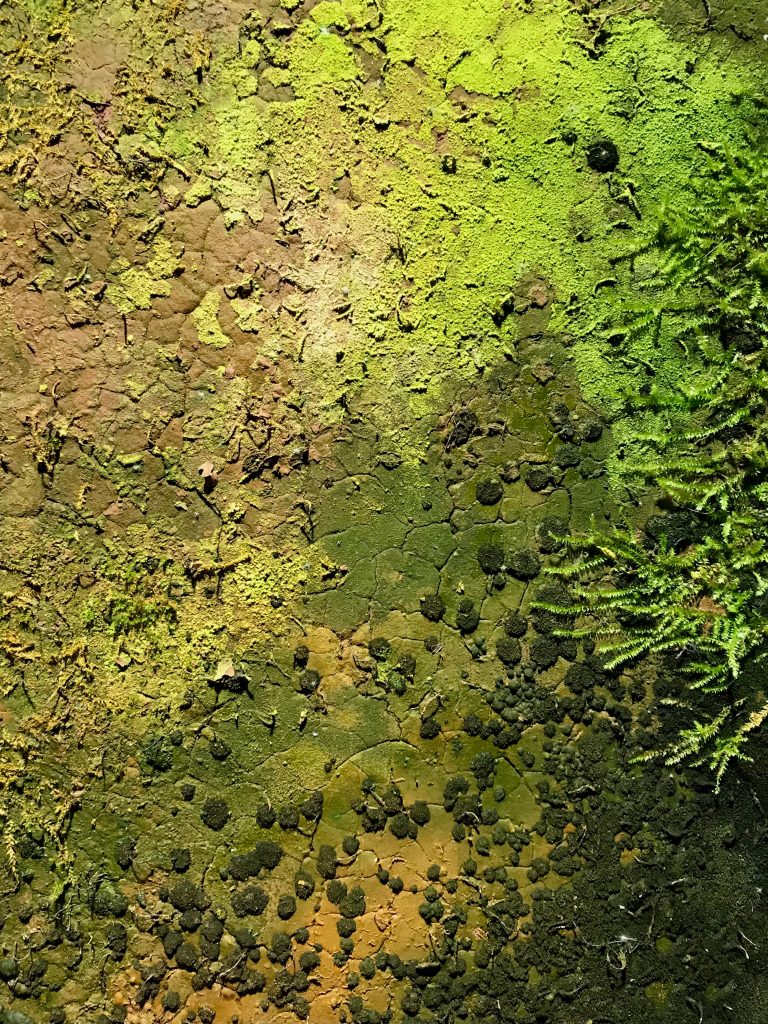
This project has yielded a dramatic, visually captivating result. We look forward to continued development of the display with time as well as additional ideas for further work. Future Mudbrick Vertical Garden renditions may be started with mixed wild biocrust cultures, rather than laboratory strains, and we will also experiment with additional enclosure and growing surface design options.
